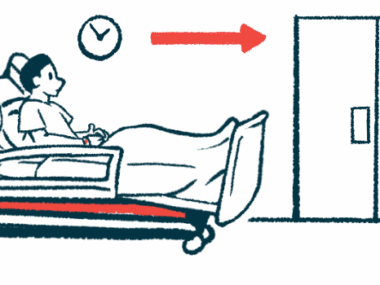Thinking about ‘Christina’s World’ and CMT
Written by |

Column by Young Lee
Until recently, I never took anything written by art critics personally. But a few weeks ago I started reading criticism of Andrew Wyeth’s painting “Christina’s World.” With each critique, it was as if I were looking at a medical report. I would read the various interpretations and analyses of the painting and come across words such as lonely, yearning, haunting, awkward, vulnerable, and disturbing.
And I would think to myself, “Wait, is that what I am?”
“Christina’s World,” one of the most famous 20th-century American paintings, features the image of a woman dressed in pink, her back turned to the viewer. She’s lying on a grassy field and her arms prop her body upright as she looks off toward a house in the distance.
It’s a memorable and well-loved work for many art lovers. It’s also a particularly special painting for those affected by Charcot-Marie-Tooth (CMT). Experts believe that Christina Olson, Wyeth’s neighbor and the real-life inspiration for the lady in pink who appears in the painting, was probably a CMTer.
And although we may never know for sure because Olson died without a diagnosis, records show she had severe mobility problems resulting from muscle atrophy that began during adolescence. Her symptoms seem to be consistent with CMT.
The CMT community has embraced Olson as an icon. Many identify with the image of Olson as painted by Wyeth, contorted hands and all. Others see the painting as championing CMT — a reference point for the greater world that is, in general, completely ignorant of CMT.
I think many CMTers feel not just kinship with the painting, but protective of the image of the lady in pink and the painting’s reputation. It’s why CMTers feel slighted when museums (such as my own local art museum) attribute Olson’s symptoms to polio or muscular dystrophy instead of CMT. Even “Jeopardy!” made a similar mistake with this clue from an episode that aired Nov. 15: “His ‘Christina’s World’ depicts a woman with polio straining toward a farmhouse.”
This is a struggle that CMTers know well. Older CMTers remember when physicians commonly mistook CMT for polio. And even now, many physicians struggle to correctly diagnose CMT. Confusion, misinformation, miscommunication, and misunderstandings are common in discussions relating to CMT. It is a disease that is neither well-known nor well-understood.
It makes sense why many CMTers feel bound to “Christina’s World.” It also makes it a tad awkward for me to admit that my feelings toward the painting are a bit more mixed than most.
For one, I feel bad that the Olson family history is now roped into a discussion that I don’t know any members of the family wanted to be involved in. I hope that people can be respectful during their armchair debates regarding Christina Olson’s medical history. She was a real person, and she has surviving relatives.
At the same time, I can’t say that the knowledge that Olson may have had CMT hasn’t forever changed the way I look at “Christina’s World.” And I don’t know whether that’s good or bad when it comes to my appreciation of Wyeth’s work.
In the past, I was able to see the painting as a striking image representing fortitude, but also longing combined with loneliness. Now I can’t help but see the painting as a mirror reflecting the prospect of life with CMT.
And I don’t know if I’m in love with that feeling, which may be appropriate when it comes to a piece of art such as “Christina’s World.” Art doesn’t need to be pretty or easy to digest. Art has the right to be challenging and to provoke complex and uneasy feelings.
And that, I guess, is exactly what “Christina’s World” is for me. It is certainly one of the most impactful works of art I’ve experienced, but also one that is particularly challenging for me as a guy with CMT.
***
Note: Charcot-Marie-Tooth News is strictly a news and information website about the disease. It does not provide medical advice, diagnosis, or treatment. This content is not intended to be a substitute for professional medical advice, diagnosis, or treatment. Always seek the advice of your physician or other qualified health provider with any questions you may have regarding a medical condition. Never disregard professional medical advice or delay in seeking it because of something you have read on this website. The opinions expressed in this column are not those of Charcot-Marie-Tooth News or its parent company, Bionews Services, and are intended to spark discussion about issues pertaining to Charcot-Marie-Tooth.





Kevin Donohue
I have read that Ms. Olson's progressive disability left her increasingly unable to tend to housekeeping and her own hygiene, with the result that many visitors were unable to endure the smell in her home. People don't seem to understand that this is yet another way CMT (or many other disabilities) can isolate people. I, too, have a complicated relation to this painting - I see both stubborn resistance and a sad, lonely struggle - but I think I see a bit inside the farmhouse, inside the Herculean effort that small tasks require for people with CMT - perhaps a painting of the unkept interior would have given a far less romantic yet more honest image of Ms. Olson's life?
Caroline Torge
Actually, Andrew Wyeth was close to the Olson family (so close that he and his wife, Betsy, were buried at on the property after they passed). The Farnsworth Museum oversees the Olson house which can be found in Cushing, Maine. Prior to approx. 2020, you could go into the house and see each room. There were Wyeth paintings throughout the house each matching the painting with the view, or the area where Christina or one of the other lesser known family members sat, etc.. I visited the house and property in 1997 and was lucky to have had the experience of seeing the exterior and interior of the home. The interior was as though it was "stuck in time." I say prior to 2020, because I visited the house again in 2021, but this time, the interior of the home was closed off with signs stating that the interior of the house was being renovated by the Farnsworth Museum.
There is a book titled "Christina's World" which shows the interior, and the hundred or so sketches/paintings of the house and Christina. There is also a video (VHS) titled the same, but it's focus is more the Olson family as a whole.